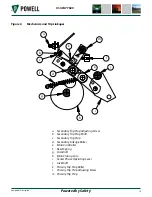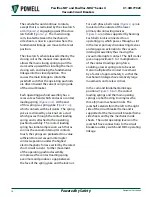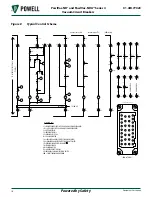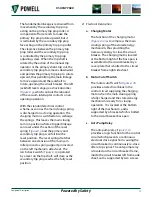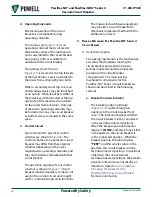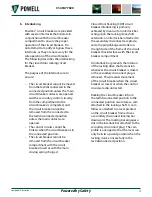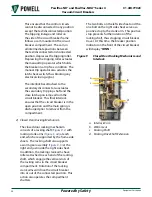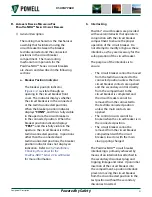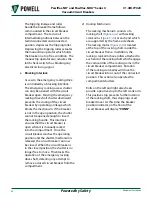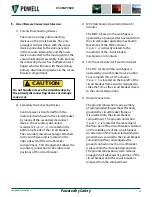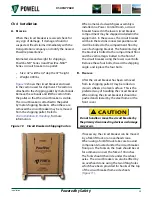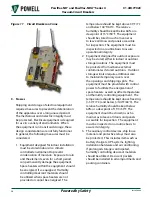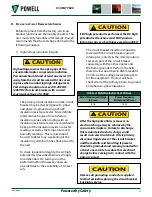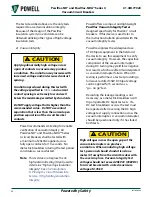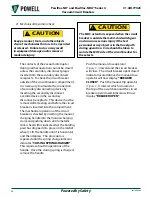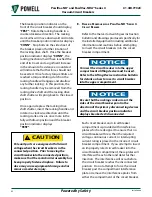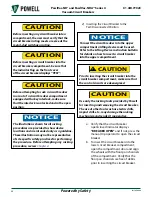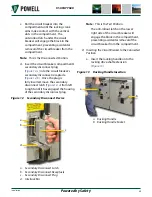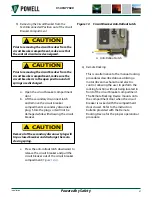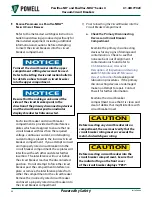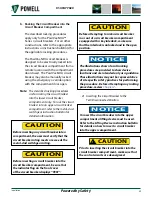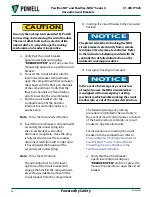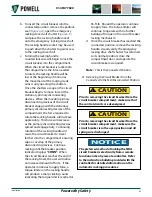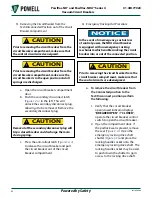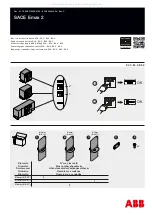
Powered by Safety
®
27
Installation
01.4IB.77020
D. p
lAcInG
the
c
IrcuIt
B
reAker
I
nto
S
ervIce
Before shipment from the factory, all circuit
breaker functions are thoroughly checked. The
user must verify functions after receipt. Powell
recommends that the tests be performed in the
following sequence:
1) High Voltage Insulation Integrity
!
CAUTION
High voltages across the open gaps of the
vacuum interrupter can produce radiation.
Personnel should stand at least one meter (3’)
away from the circuit breaker with the covers
in place when conducting high voltage tests.
Test voltage should not exceed 14.25kVAC
(20kVDC) for circuit breaker with a rated
maximum voltage of 4.76kV.
The primary circuit insulation on the circuit
breaker may be checked phase-to-phase
and phase-to-ground using a 2500V
insulation resistance tester. Since definite
limits cannot be given for satisfactory
insulation values when testing with an
insulation resistance tester, a record should
be kept of the insulation resistance tester
readings as well as the temperature and
humidity readings. This record should
be used to detect any weakening of the
insulation system from one check period to
the next.
To check insulation integrity, the AC high
potential test described below is strongly
recommended. DC testing is not the
preferred method, however, values are
provided due to the availability of DC test
sets.
!
CAUTION
If DC high potential is performed, the DC high
potential test machine must NOT produce
instantaneous peak voltages exceeding 20kV.
The circuit breaker insulation should be
tested with the circuit breaker vacuum
interrupter contacts in the closed position.
Test each pole of the circuit breaker
separately, with the other 2 poles and
the frame grounded. Perform the field
dielectric test described in ANSI Standard
C37.20.2, at the voltage level appropriate
for the equipment. This test will have
checked all of the primary phase-to-ground
and phase-to-phase insulation.
Table A Field Dielectric Test Values
Rated Maximum Voltage
(kV rms)
Power Frequency
Withstand (kV rms)
4.76
14.25
After the high potential is removed, an
electrical charge may be retained by the
vacuum interrupters. Failure to discharge
this residual electrostatic charge could
result in an electrical shock. All six primary
disconnecting devices of the circuit breaker
and the metallic mid band ring if present
should be grounded and remain grounded for
at least one minute to reduce this electrical
charge before coming in to contact with the
primary circuit.
!
CAUTION
Remove all grounding conductors applied
for this test before placing the circuit breaker
back into service.
CAUTION

